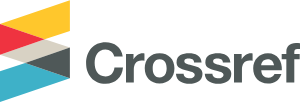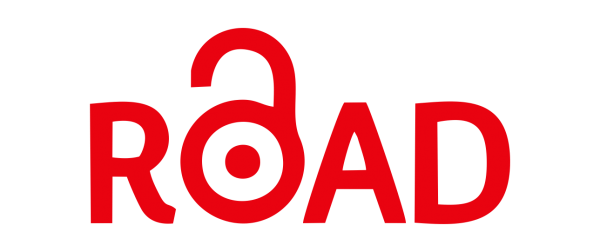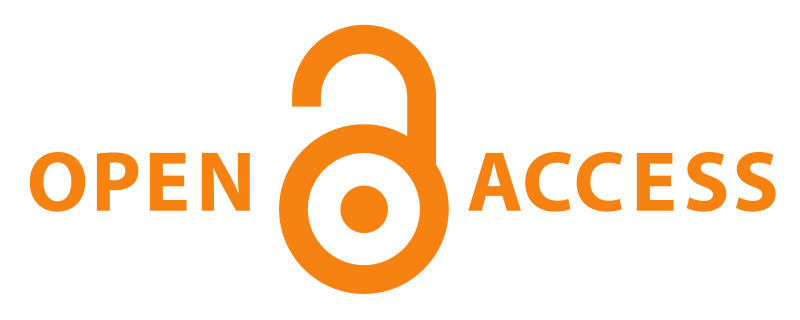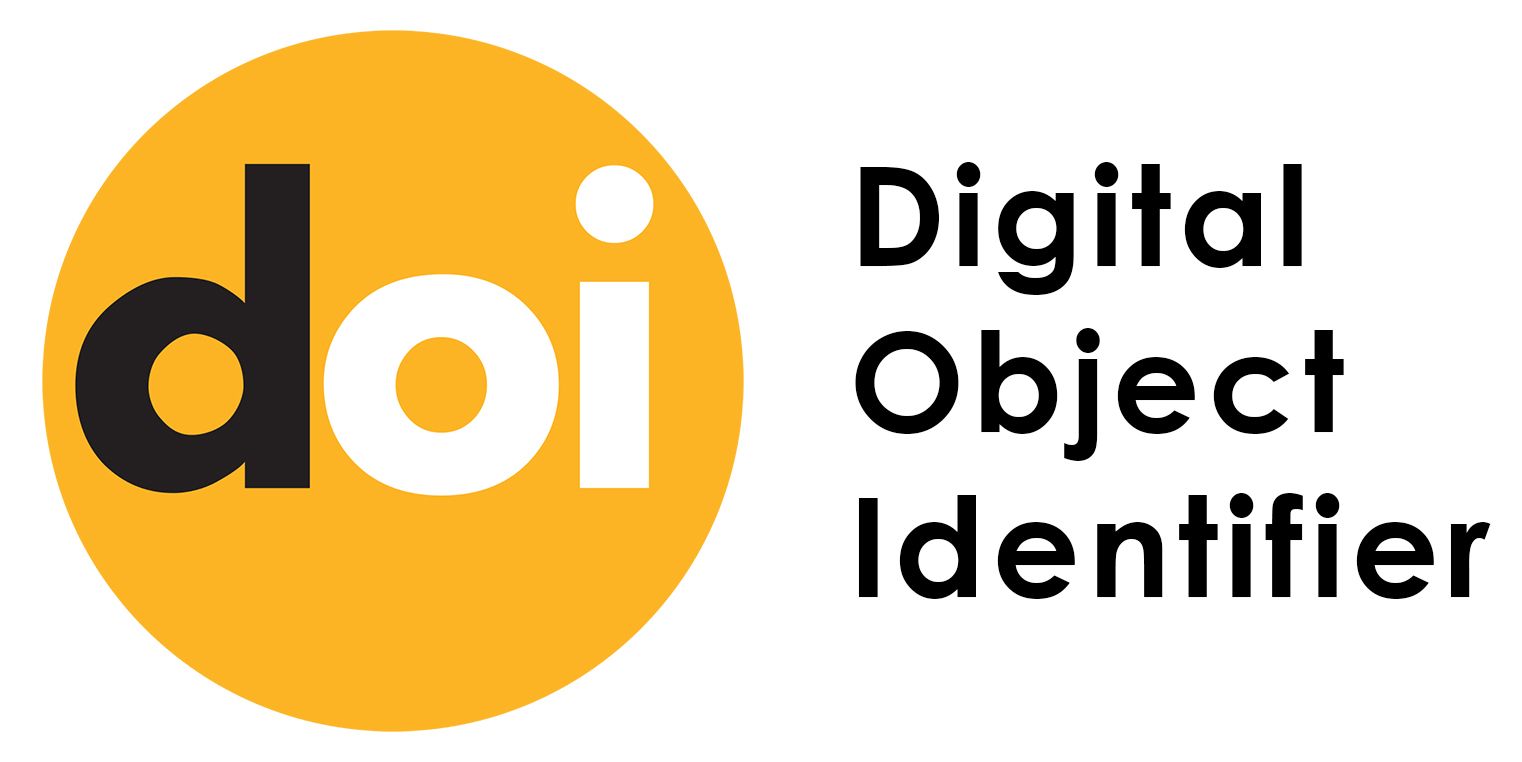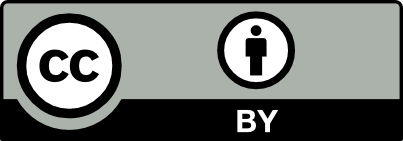Information for Authors
About the Journal
YJES is an Open Access international, peer-reviewed journal publishing high-quality, original research. Please see the journal's Aims & Scope for information about its focus and peer-review policy.
Open Access means you can publish your research so it is free to access online as soon as it is published, meaning anyone can read (and cite) your work.
Please note that this journal only publishes manuscripts in English.
YJES accepts the following types of articles: original papers, reviews, case reports, surveys, and short communications.
Language
Manuscripts must be written in English in a clear and concise manner. Any author who is not fluent in idiomatic English is urged to seek assistance with manuscript preparation prior to submission. Reviewers are not expected to correct grammatical errors and any deficiency in this area may detract from the scientific content of the paper and result in acceptance delays or rejection.
Types of Articles
The journal seeks to publish four types of contributions in the form of original articles, short communications, reviews, and mini reviews.
- Original articles: Articles which represent in-depth research in various scientific disciplines.
- Short communications: Should be complete manuscripts of significant importance. However, their length and/or depth do not justify a full-length paper. The total number of figures and tables should not exceed 4. The number of words should be approximately 3,000
- Review articles: Should normally comprise less than 12,000 words; contain unstructured abstract and includes up-to-date references. Special attention will be paid to the teaching value of review papers.
- Mini reviews: These are reviews of important and recent topics that are presented in a concise and well-focused manner. The number of words is limited to 6,000 words.
- Case studies: Case studies are reports of special purpose studies on any of the sub-topics described in the Aims and Scope. They simply focus on the application of technology or idea to substantiate a hypothesis or problem.
Before Submission
Please make sure that your manuscript meets the below criteria:
- Your manuscript is an original work and has not been published or is currently under review with another journal or Conference Proceedings.
- Your work meets all the Research Ethics. The manuscript should contain a separate section of "Ethics Approval" if the work involves human or animal subjects.
- The English of the manuscript is acceptable and it should be free of grammatical and spelling errors.
- Your figures are of acceptable quality and uploaded as separate files.
- Your references are formatted correctly and numbered as they appear in the text.
- Only manuscripts of sufficient quality that meet the aims & scope of the journal will be reviewed.
- Manuscripts must conform to the guidelines of the journal shown below.
Manuscripts must be submitted on the understanding that they have not been published elsewhere and are only being considered by this journal. The submitting author is responsible for ensuring that the article’s publication has been approved by all the other coauthors. It is also the submitting author’s responsibility to ensure that the article has all necessary institutional approvals. Only an acknowledgment from the editorial office officially establishes the date of receipt. Further correspondence and proofs will be sent to the author(s) before publication, unless otherwise indicated. It is a condition of submission that the authors permit editing of the manuscript for readability. All inquiries concerning the publication of accepted manuscripts should be addressed to Editor-in-Chief.
Authors must declare all potential interests in a ‘Conflicts of interest’ section, which should explain why the interest may be a conflict. If there are none, the authors should state “The author(s) declare(s) that there is no conflict of interest regarding the publication of this paper.” Submitting authors are responsible for co-authors declaring their interests.
Authors must declare current or recent funding (including for article processing charges) and other payments, goods, or services that might influence the work. All funding, whether a conflict or not, must be declared in the ‘Acknowledgments’.
The involvement of anyone other than the authors who 1) has an interest in the outcome of the work; 2) is affiliated with an organization with such an interest; or 3) was employed or paid by a funder, in the commissioning, conception, planning, design, conduct, or analysis of the work, the preparation or editing of the manuscript or the decision to publish must be declared.
Declared conflicts of interest will be considered by the editor and reviewers and included in the published article.
Preparation of Manuscripts
Authors should submit their manuscripts to the editorial office as word files (word 2007 or higher) via the online Manuscript Tracking System.
The original manuscript should be formatted with single line spacing using Times New Roman fonts (12 pt) and fully justified right and left.
The text must be in a single-column format with justified margins. Use bold face, italics, subscripts, and superscripts where appropriate.
To avoid unnecessary errors, the authors are strongly advised to use the "spell-check" and "grammar-check" functions of their word processing software.
Use continuous line numbering throughout the text and all manuscript pages must be numbered.
Use the equation editor or Math Type for equations.
Use the table function to make tables.
Use the decimal system of heading with no more than three levels, for instance, 1., 2., 2.1, 2.1.1, …etc.
Online Submission
Manuscripts should be submitted by one of the authors of the manuscript through the online editorial manager system (EM) following the instructions given on the screen. Only Word (.doc, .docx, .rtf) files can be submitted through the EM, and there is no page limit. Submissions by anyone other than one of the authors will not be accepted. The submitting author takes responsibility for the manuscript during submission and peer review.
Initial evaluation
All submitted manuscripts will be checked by the Editorial Office to determine whether they are properly prepared and whether they follow the ethical policies of the journal. All submitted manuscripts are screened for potential plagiarism via similarity checking software. Manuscripts that do not fit the journal's aims and scope or do not meet the standards of the journal will be rejected before peer review. Incomplete manuscripts not prepared in the advised style will be sent back to authors without scientific review. After these checks, the Editorial Office will consult the journal’s Editor-in-Chief to determine whether the manuscript fits the scope of the journal and whether it is scientifically sound. Manuscripts with insufficient priority for publication will be rejected promptly. Please write your text in good English. The Editor reserves the right to reject a manuscript on the grounds of insufficient language quality. Reject decisions at this stage will be verified by the Editor-in-Chief.
Submission Declaration and Verification
By submitting any research article for the purposes of publication by the journal you must certify and warrant that:
You have been authorized by any coauthors to submit the research article; and
- You are the sole author(s) of the article and are legally able and entitled to submit the article and authorize the journal to publish the research article. If the law requires that the article be published in the public domain, I/we will notify the journal at the time of submission.
- The research article is original, has not already been published in any other journal or is not currently under consideration for publication by another journal, and does not infringe any existing copyright or any other rights prescribed by law;
- The article contains nothing that is unlawful, defamatory, or which would, if published, constitute a breach of contract or of confidentiality;
- Due care, diligence, and all other requisite investigations were carried out in the preparation of the research article(s) to ensure its accuracy. To the best of your knowledge, all statements contained in it purporting to be factual are true and correct.
Article structure
The manuscript should be compiled in the following order:
- Title page
- Abstract, Keywords
- Introduction
- Material and methods
- Results
- Discussion (Results and discussion can be combined in one section)
- Conclusion
- Acknowledgment(s)
- Conflicts of Interest
- References
- Tables
- Figures
Title page
The title page should include the following in English:
- Title: The title should be brief, concise, and descriptive. It should not contain any literature references or compound numbers or non-standardized abbreviations. It should be centered, typed in Times New Roman 14 point and boldface.
- Authors and affiliations: Supply given names, middle initials, and family names for complete identification. They should be centered beneath the title and typed in Times New Roman 12-point, non-italic, and boldface. Use superscript lowercase letters to indicate different affiliations, which should be as detailed as possible and must include department, faculty/college, University, the city with zip code or P.O. Box and country. The primary affiliation for each author should be the institution where most of their work was done. If an author has subsequently moved, the current address may additionally be stated. Addresses will not be updated after the publication of the article.
- Corresponding author: Should be indicated with an asterisk, and contact details (Tel., fax, and e-mail address) should be placed in a footnote. If available, the 16-digit ORCID of the corresponding author.
Abstract
The abstract should be self-contained, citation-free, and should not exceed 300 words. The abstract should briefly describe the purpose of the study, how the investigation was performed, the most important results, and the principal conclusions that were drawn from the results, respectively. Nonstandard or uncommon abbreviations should be defined at first mention within the abstract. The abstract should be typed in Times New Roman, 12-point, non-italic and non-boldface.
Keywords
Authors are asked to provide (4 to 6) keywords, separated with semicolons, and should be typed in Times New Roman, 12-point, non-italic and non-boldface.
Introduction
This section should be succinct, with no subheadings. The author(s) should strive to define the significance of the work and the justification for its publication. Any background discussion should be brief and restricted to pertinent material and the novelty of the work should be detailed.
Material and methods
This part should contain sufficient detail that would enable all procedures to be repeated. It can be divided into subsections if several methods are described. Authors should be as concise as possible in experimental descriptions. The experimental section must contain all of the information necessary to guarantee reproducibility. Previously published methods should be indicated by a reference and only relevant modifications should be described. All vendor details, including company, city, and country, should be mentioned for chemicals, reagents, strains, etc. For statistical analysis, please state the appropriate test(s) in addition to a hypothesized p-value or significant level (for example 0.05).
Results and Discussion
They should be combined. The study results should be clear and concise. Restrict the use of tables and figures to depict data that is essential to the message and interpretation of the study. The results should be presented in a logical sequence in the text, tables and illustrations. The discussion should explore the significance of the results of the work, not repeat them. Include in the discussion the implications of the findings and their limitations, how the findings fit into the context of other relevant work, and directions for future research.
Conclusion(s)
The main conclusion(s) of the study should be presented in a short conclusion statement highlighting the goals of the study and its importance. State new hypotheses when warranted. Include recommendations when appropriate.
Acknowledgment(s)
All acknowledgments (if any) should be included at the very end of the manuscript before the references. Anyone who made a contribution to the research or manuscript, but who is not a listed author, should be acknowledged (with their permission).
Conflicts of Interest
Authors must declare all relevant interests that could be perceived as conflicting. Authors should explain why each interest may represent a conflict. If no conflicts exist, the authors should state this. Submitting authors are responsible for co-authors declaring their interests.
References
Text: Indicate references by Arabic numerals in brackets, which run in order of appearance throughout the text (Vancouver style). For instance [4] or [7-10, 13,15]. The actual authors can be referred to, but the reference number(s) must always be given.
Figures
Figures and tables should not be submitted in separate files. If the article is accepted, authors will be asked to provide the source files of the figures. Each figure should be supplied in a separate electronic file. All figures should be cited in the manuscript in consecutive order. Figures should be supplied in either vector art formats (Illustrator, EPS, WMF, FreeHand, CorelDraw, PowerPoint, Excel, etc.) or bitmap formats (Photoshop, TIFF, GIF, JPEG, etc.). Bitmap images should be of 300 dpi resolution at least unless the resolution is intentionally set to a lower level for scientific reasons. If a bitmap image has labels, the image and labels should be embedded in separate layers. Figures should be referred to as Fig. 1, Figs. 2, 3-5, using Arabic numerals. Ensure that all tables, figures, and schemes are cited in the text in numerical order. Figure parts should be denoted by lowercase letters (a,b,c,..etc).
Tables
Tables should be cited consecutively in the text. Every table must have a descriptive title and if numerical measurements are given, the units should be included in the column heading. Vertical rules should not be used. Figure and table captions should be 10-point Times New Roman, boldface, and non-italic. Initially capitalize only the first word of the caption. Figure captions are to be below the figures and Table titles are to be fully justified right and left above the table.
Nomenclature and Units
All measurements and data should be given in SI units where possible, or in other internationally accepted units in parentheses throughout the text. Illustrations and Tables should use conventional units, with conversion factors given in legends or footnotes.
Statements & Declarations
The following statements must be included in your submitted manuscript under the heading 'Statements and Declarations'. This should be placed after the References section. Please note that submissions that do not include required statements will be returned as incomplete.
FundingPlease describe any sources of funding that have supported the work. The statement should include details of any grants received (please give the name of the funding agency and grant number).
Example statements:
“This work was supported by […] (Grant numbers […] and […]). Author A.B. has received research support from Company A.”
“The authors declare that no funds, grants, or other support were received during the preparation of this manuscript.”
Authors are required to disclose financial or non-financial interests that are directly or indirectly related to the work submitted for publication. Interests within the last 3 years of beginning the work (conducting the research and preparing the work for submission) should be reported. Interests outside the 3-year time frame must be disclosed if they could reasonably be perceived as influencing the submitted work.
Example statements:
“Financial interests: Author A and B declare they have no financial interests. Author C has received speaker and consultant honoraria from Company M. Dr. C has received speaker honorarium and research funding from Company M and Company N. Author D has received travel support from Company O. Non-financial interests: Author D has served on advisory boards for Company M and Company N.”
“The authors have no relevant financial or non-financial interests to disclose.”
Please refer to the “Competing Interests” section for more information on how to complete these sections.
Authors are encouraged to include a statement that specifies the contribution of every author to the research and preparation of the manuscript.
Example statement:
“All authors contributed to the study conception and design. Material preparation, data collection and analysis were performed by [full name], [full name] and [full name]. The first draft of the manuscript was written by [full name] and all authors commented on previous versions of the manuscript. All authors read and approved the final manuscript.”
Please refer to the “Authorship Principles” section for more information.
This journal encourages authors to provide an optional statement of data availability in their article. Data Availability Statements should include information on where data supporting the results reported in the article can be found, including, where applicable, hyperlinks to publicly archived datasets analyzed or generated during the study. Data availability statements can also indicate whether data are available on request from the authors and where no data are available, if appropriate.
Example statements:
“The datasets generated during and/or analyzed during the current study are available in the [NAME] repository, [PERSISTENT LINK TO DATASETS]”
“The datasets generated during and/or analyzed during the current study are available from the corresponding author on reasonable request.”
Please refer to the “Research Data Policy and Data Availability” section for more information.
Individuals may consent to participate in a study, but object to having their data published in a journal article. If your manuscript contains any individual person’s data in any form (including any individual details, images or videos), consent for publication must be obtained from that person, or in the case of children, their parent or legal guardian. This is in particular applicable to case studies. A statement confirming that consent to publish has been received from all participants should appear in the manuscript
Example statement:
“The authors affirm that human research participants provided informed consent for publication of the images in Figure(s) 1a, 1b and 1c.”
Revised manuscripts
When you revise your manuscript, upload your revised submissions including the following files:
Revised manuscript:
Clarifying the changes you have made since the original submission by using the "Track Changes" option in Microsoft Word. Upload this as a "Revised Article with Changes Highlighted" file.
Response to reviewers:
Type the specific points made by each reviewer. Include your responses to all the reviewers' and editors' comments and list the changes you have made to the manuscript. Upload this document as a "Response to reviewers" file.
Revised manuscript (clean copy):
Upload a clean copy of your revised manuscript with names, which does not show your changes. Upload this as your "Manuscript" file.
After acceptance
Upon acceptance, your article will be exported to production to undergo typesetting. Once the typesetting is complete, you will receive the proof.
Proofs
One set of page proofs (as PDF files) will be sent by e-mail to the corresponding author. Please use this proof only for checking the typesetting, editing, completeness, and correctness of the text, tables, and figures. We will do our best to get your article published quickly and accurately. Therefore, it is important to ensure that all of your corrections are sent back in one communication within 48 h proofreading is solely your responsibility. Note that the publisher may proceed with the publication of an article if no response is received.
Supplementary materials
Describe any supplementary material published online alongside the manuscript (figure, tables, video, spreadsheets, etc.). Please indicate the name and title of each element as follows Figure S1: title, Table S1: title, etc.
Prior Publication Policy
Authors submitting to YJES may share an initial draft of their manuscript on a preprint server. They must disclose this in the cover letter and, if applicable, specify any revisions made between preprint deposition and journal submission. Any other form of prior or redundant publication is not permitted.
After publication in YJES, authors are encouraged to update the preprint with a link to the final published article using its Digital Object Identifier (DOI).
Article Publishing Charge
There are no Article Processing Charges (APC) for publication of the journal on all submissions.


